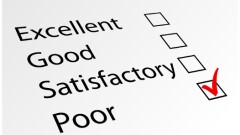Early summer is a common time for performance reviews in firms, where coaches and managers explore how to help team members develop, get better, grow, and progress in their careers. However, because of the pandemic, we can’t just barrel into performance review season like it is business as usual. This year, more than ever before, we have to guard against our performance feedback instruments or our highly analytical, less compassionate, more technical personas inadvertently delivering feedback that feels like, “Here’s what’s wrong with you lately.”
And while no one would take this approach or cause this feeling intentionally, it is important that this year before you embark on your performance review process, that you pause and evaluate the best approach to feedback and performance reviews and then communicate any shifts you’ll make to the rest of the team, so they execute appropriately. I realize that it’s just one more thing to think about and modify due to the pandemic, and while we may be sick of doing so, the pandemic has been and is very real and it is still impacting our people.
Right now, our people probably can’t take a whole bunch of feedback. Many are an inch away from a breakdown. They are fatigued, frustrated, worried, and wondering what’s next. There are pockets of hope, too, and good things happening in our firms, communities and country, but the truth is that most of us have a psychic bruise from this past year that could range from significant loss of life or illness, job downturns or financial impacts to their family to just plain being tired from continually having to pivot, care for others, live a “small” life and the general climate in our nation. (Read Jen Wilson’s blog for more on “
At the same time, the performance review process is an important one, and one that we do not want to take lightly or step over. This year it is important to evaluate what changes in our approach need to be made so you can focus on the most important message for each of your team members, starting with thank you. Take the time to pause and determine how you should proceed this year with your leadership team and then get your coaches and reviewers in the conversation and on the same page. You will find that you have a bigger impact in engaging your team and helping them move forward when you do!
So, what can you do? Pay special attention to these six elements as you plan for your performance review cycle this year:











